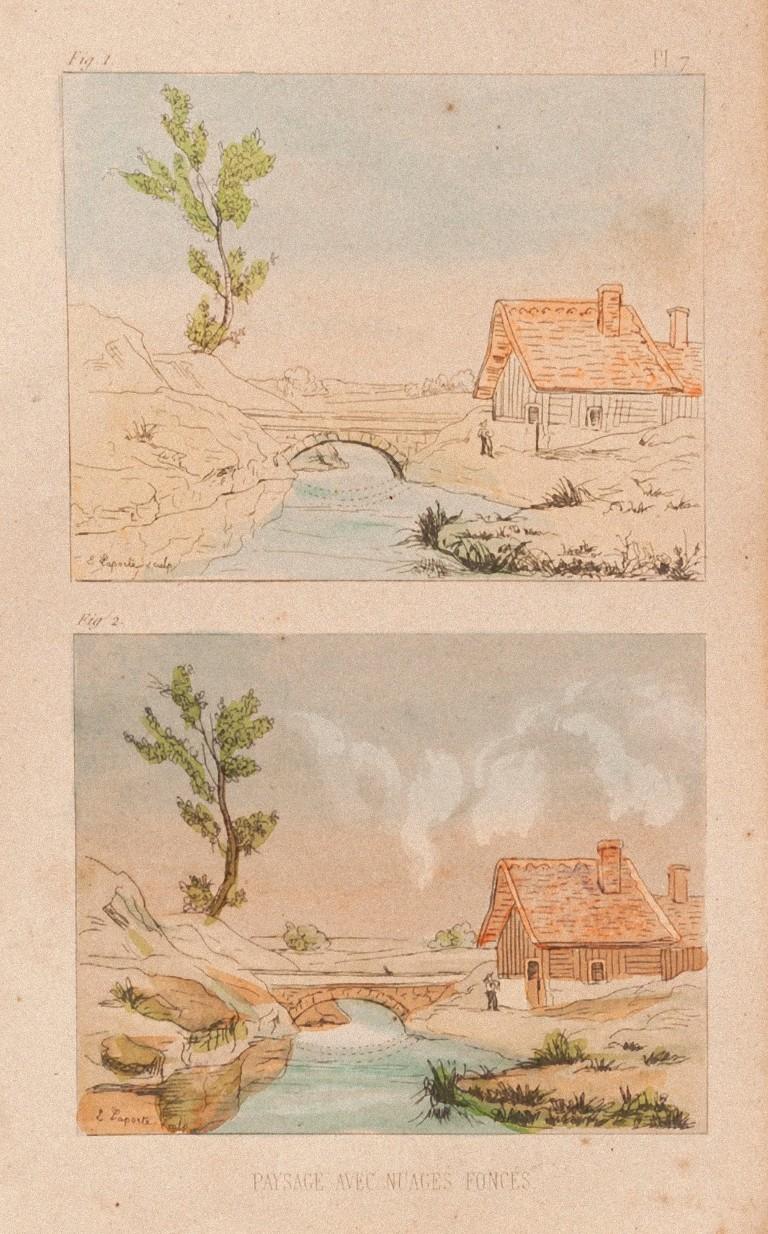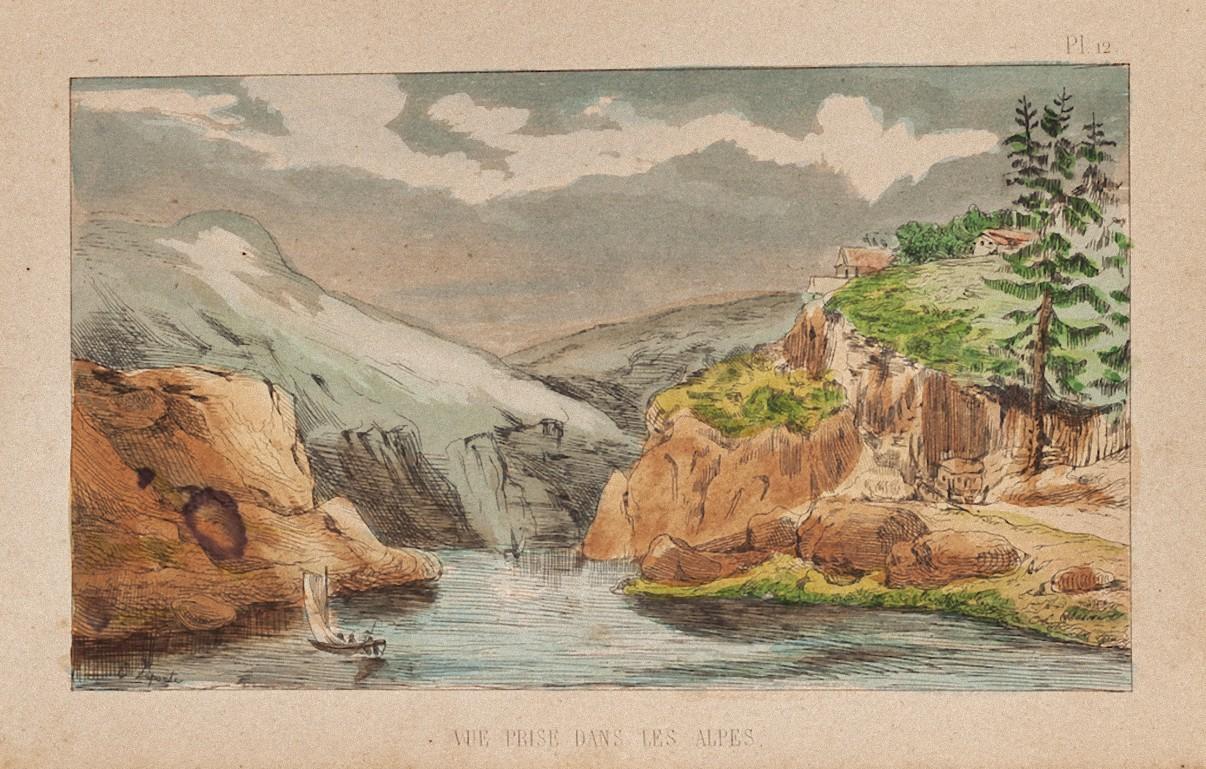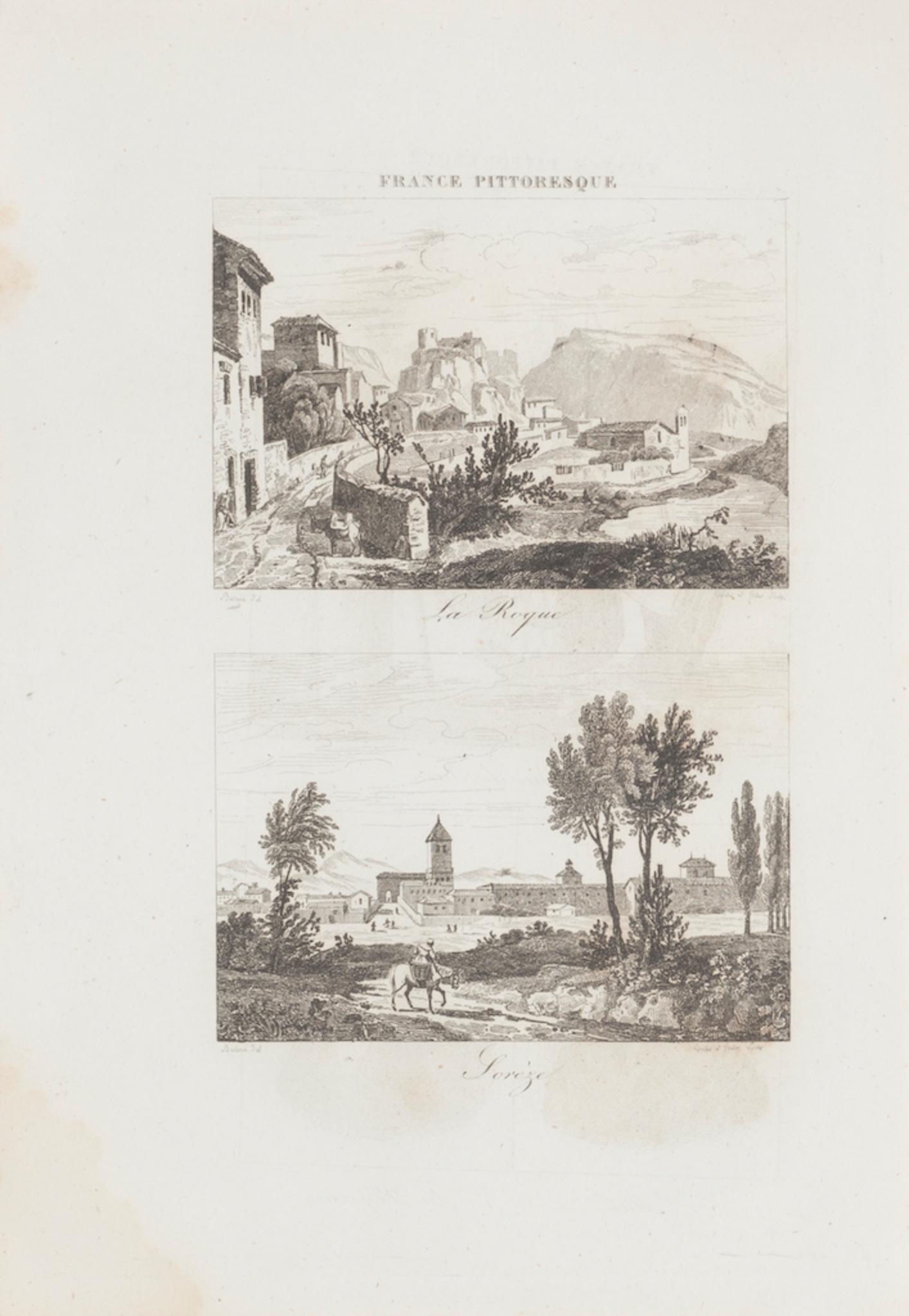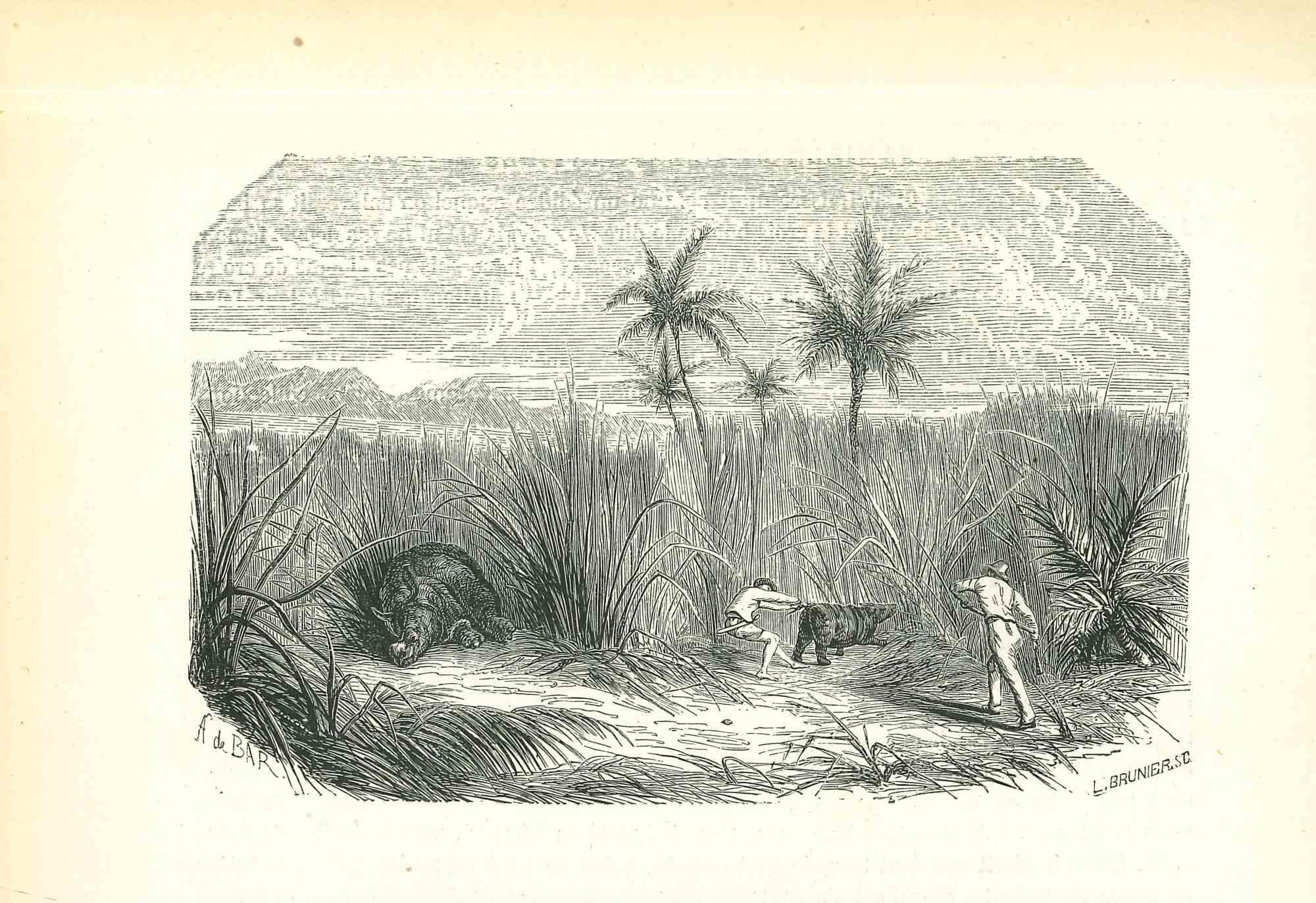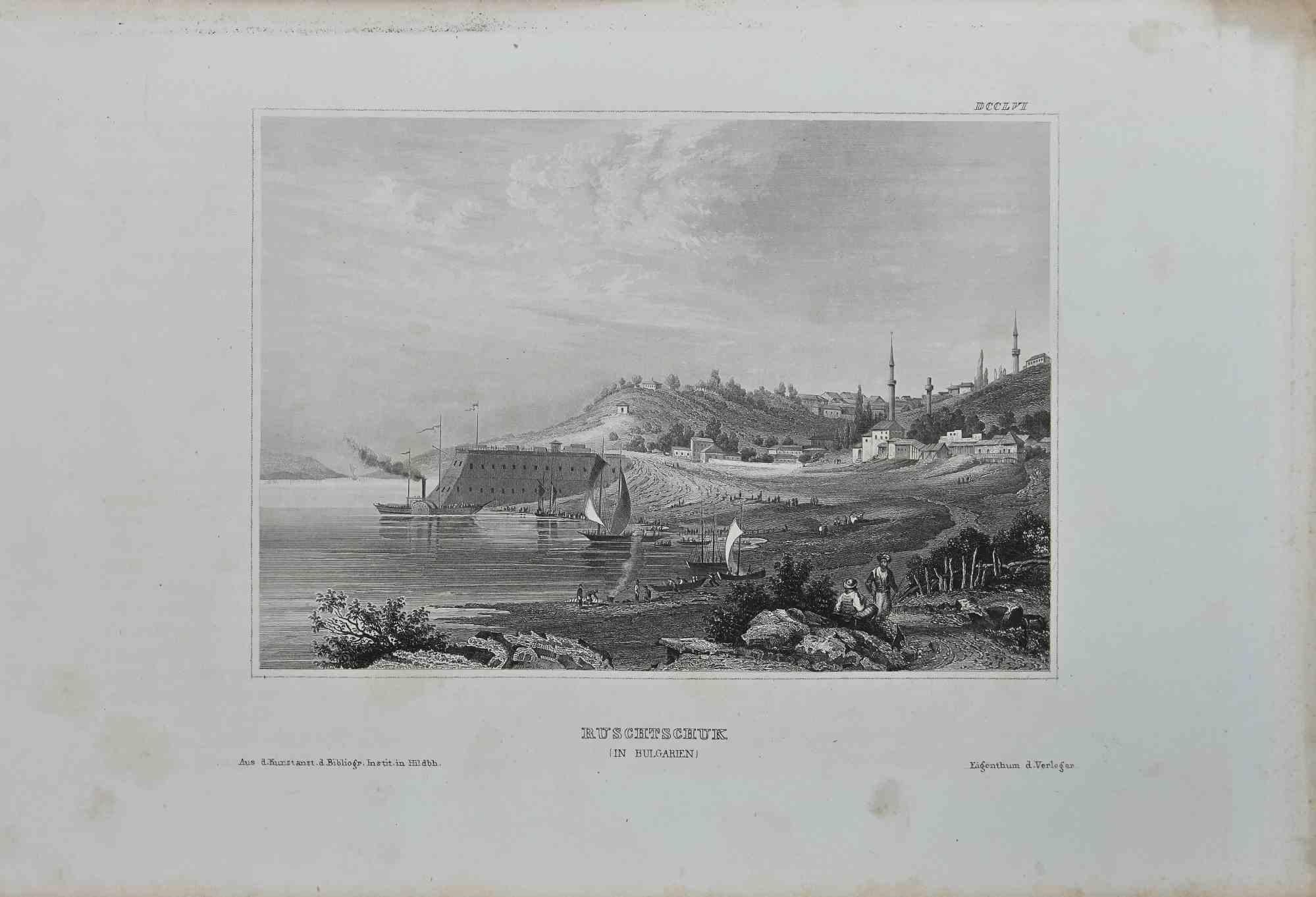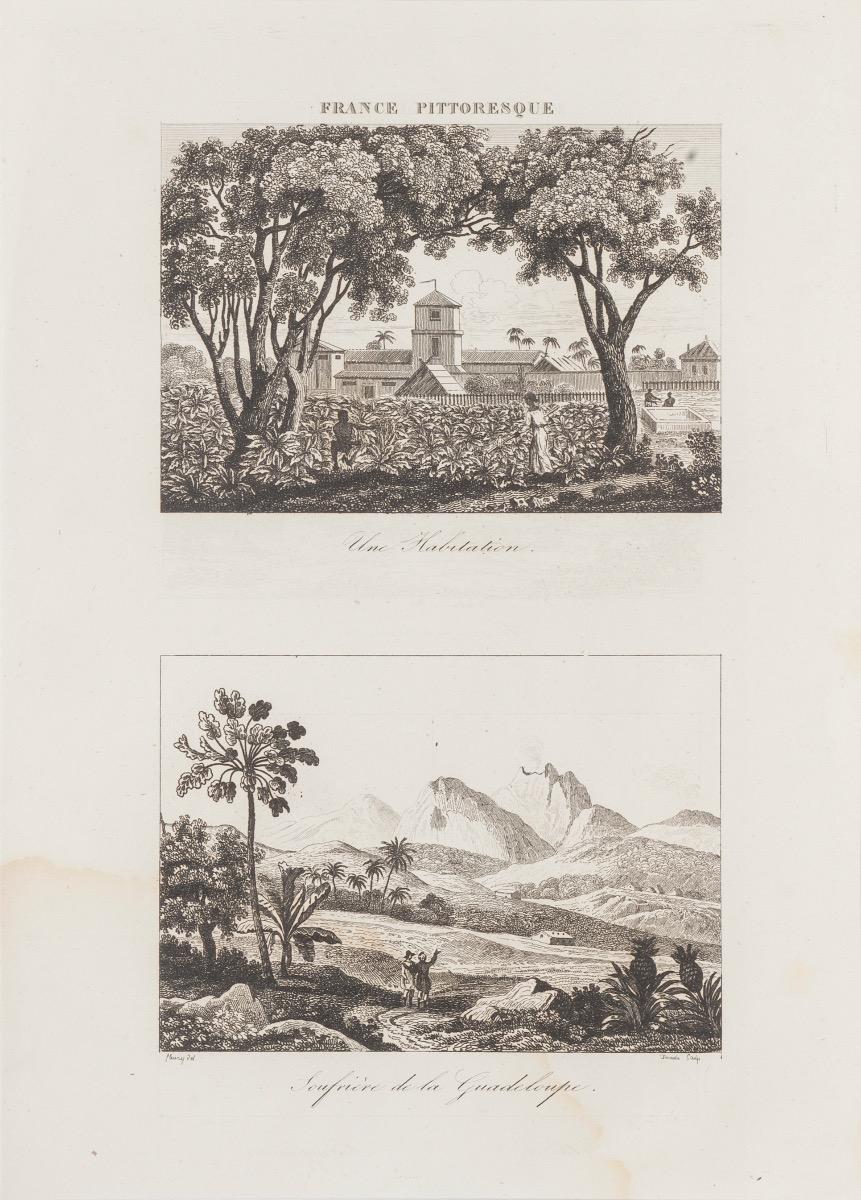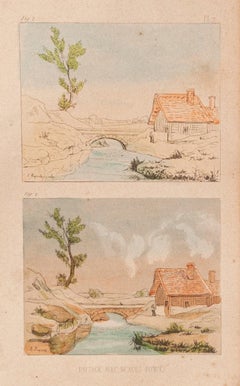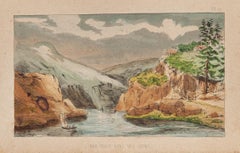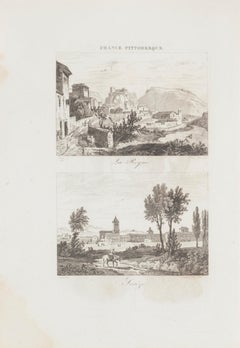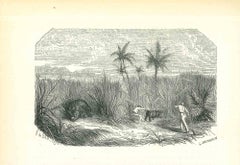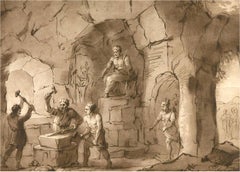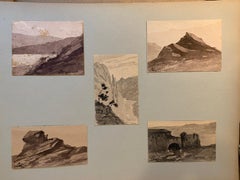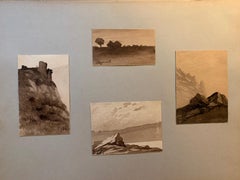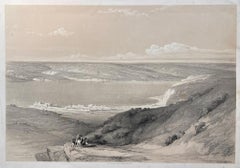Items Similar to Landscape - Lithograph on Paper by E. Laport - 1860
Want more images or videos?
Request additional images or videos from the seller
1 of 2
E. LaportLandscape - Lithograph on Paper by E. Laport - 18601860
1860
$236.63
£179.77
€200
CA$332.50
A$365.15
CHF 187.96
MX$4,369.07
NOK 2,393.18
SEK 2,242.77
DKK 1,523.55
About the Item
Landscape is a lithograph on paper, realized by E. Laport in about 1860.
The state of preservation is good except for some diffused stains.
Hand-colored.
Plate no.5
Sheet dimension: 21 x 13
The artwork represents attractive sea landscape with vivid color, joyfully created, through confident and strong stokes with harmonious colors with well-balanced composition.
- Creator:E. Laport
- Creation Year:1860
- Dimensions:Height: 8.27 in (21 cm)Width: 5.12 in (13 cm)Depth: 0.04 in (1 mm)
- Medium:
- Period:
- Framing:Framing Options Available
- Condition:Insurance may be requested by customers as additional service, contact us for more information.
- Gallery Location:Roma, IT
- Reference Number:Seller: M-1133611stDibs: LU65037339412
About the Seller
4.9
Platinum Seller
Premium sellers with a 4.7+ rating and 24-hour response times
1stDibs seller since 2017
7,813 sales on 1stDibs
Typical response time: 1 hour
- ShippingRetrieving quote...Shipping from: Grasse, France
- Return Policy
More From This Seller
View AllLandscape - Original Lithograph on Paper by E. Laport - 1860
Located in Roma, IT
Landscape is an original lithograph on paper, realized by E.Laport in about 1860.
The state of preservation is good except for some diffused stains.
Hand-colored.
Plate no.7.
Sh...
Category
1860s Figurative Prints
Materials
Lithograph
Landscape - Lithograph on Paper by E. Laport - 1860
Located in Roma, IT
Landscape is an original lithograph on paper, realized by E. Laport around 1860.
The state of preservation is good except for some diffused stains.
Hand-colored.
Plate no.12
She...
Category
1860s Figurative Prints
Materials
Lithograph
Landscape - Original Lithograph - 19th Century
Located in Roma, IT
Landscape is an original lithograph on paper realized by an Anonymous artist of the XIX century.
Printed in series of "France Pittoresque" at the top center.
Titled in France on t...
Category
19th Century Landscape Prints
Materials
Lithograph
Landscape - Original Lithograph by Paul Gervais - 1854
By Paul Gervais
Located in Roma, IT
Landscape is an original lithograph on ivory-colored paper, realized by Paul Gervais (1816-1879). The artwork is from The Series of "Les Trois Règnes de la Nature", and was published...
Category
1850s Modern Figurative Prints
Materials
Lithograph
Landscape - Original Lithograph - 1856
Located in Roma, IT
Landscape is an Original Litograph realized by an unknown artist in 1856.
The little artwork is in good condition, except for darkened paper along the edges.
No signature, title in...
Category
19th Century Modern Figurative Prints
Materials
Lithograph
French Landscape - Original Lithograph - 19th Century
Located in Roma, IT
Landscape is an original lithography on paper realized by an Anonymous artist of the 19th Century.
Printed in series of "France Pittoresque" at the top center.
Titled in France on...
Category
19th Century Landscape Prints
Materials
Lithograph
You May Also Like
Richard Earlom after Lorrain - 1802 Etching, Liber Vertatis Landscape No. 7
Located in Corsham, GB
A fine example of the 1802 strike of Landscape No. 7 from the etched version of the Liber Vertatis. Sculptured by Richard Earlom (1743-1822) after the original from the book by Claud...
Category
19th Century Interior Prints
Materials
Etching
5 French 19th century Pen and Ink landscapes from a sketch folder
By Emile Cagniart
Located in Woodbury, CT
Interesting and well-drawn French late 19th-century landscape sketch in pen and ink .
Emile Cagniart was born in Paris where he would remain for his sixty years. Like many young asp...
Category
1890s Impressionist Landscape Drawings and Watercolors
Materials
Ink
$1,160 Sale Price
20% Off
Free Shipping
4 French 19th century Pen and Ink landscapes from a sketch folder
By Emile Cagniart
Located in Woodbury, CT
Interesting and well-drawn French late 19th-century landscape sketches in pen and ink .
Emile Cagniart was born in Paris where he would remain for his sixty years. Like many young a...
Category
1890s Impressionist Landscape Drawings and Watercolors
Materials
Ink
$1,160 Sale Price
20% Off
Free Shipping
The Sea of Tiberias. David Roberts Holy Land lithograph, 1844.
By David Roberts
Located in Melbourne, Victoria
'The Sea of Tiberias', tinted lithograph by Louis Haghe (1806-1885) after David Roberts RA.
David Roberts (1796-1864) traveled throughout Egypt and the Holy Land in the late 1830s p...
Category
Mid-19th Century Victorian Landscape Prints
Materials
Lithograph
Antique Print of Kerguelens Island by Cook, C.1784
By James Cook
Located in Langweer, NL
Antique print titled 'Three views of Arched Point (..)'. Four views of Kerguelens Island/Desolation Islands, discovered by the Frenchman Marion du Fresne in 1772 and visited by Cook ...
Category
Antique 18th Century Prints
Materials
Paper
$151 Sale Price
20% Off
Landscape with a Sailboat and Fishermen - Original etching
By Gabriel Perelle
Located in Paris, IDF
PERELLE Family (17th Century)
Landscape with a Sailboat and Fishermen
Original Engraving
Signed in the plate
On laid paper, 15.5 x 28 cm
INFORMATION: This family of artists, led by...
Category
Late 17th Century Academic Figurative Prints
Materials
Etching
